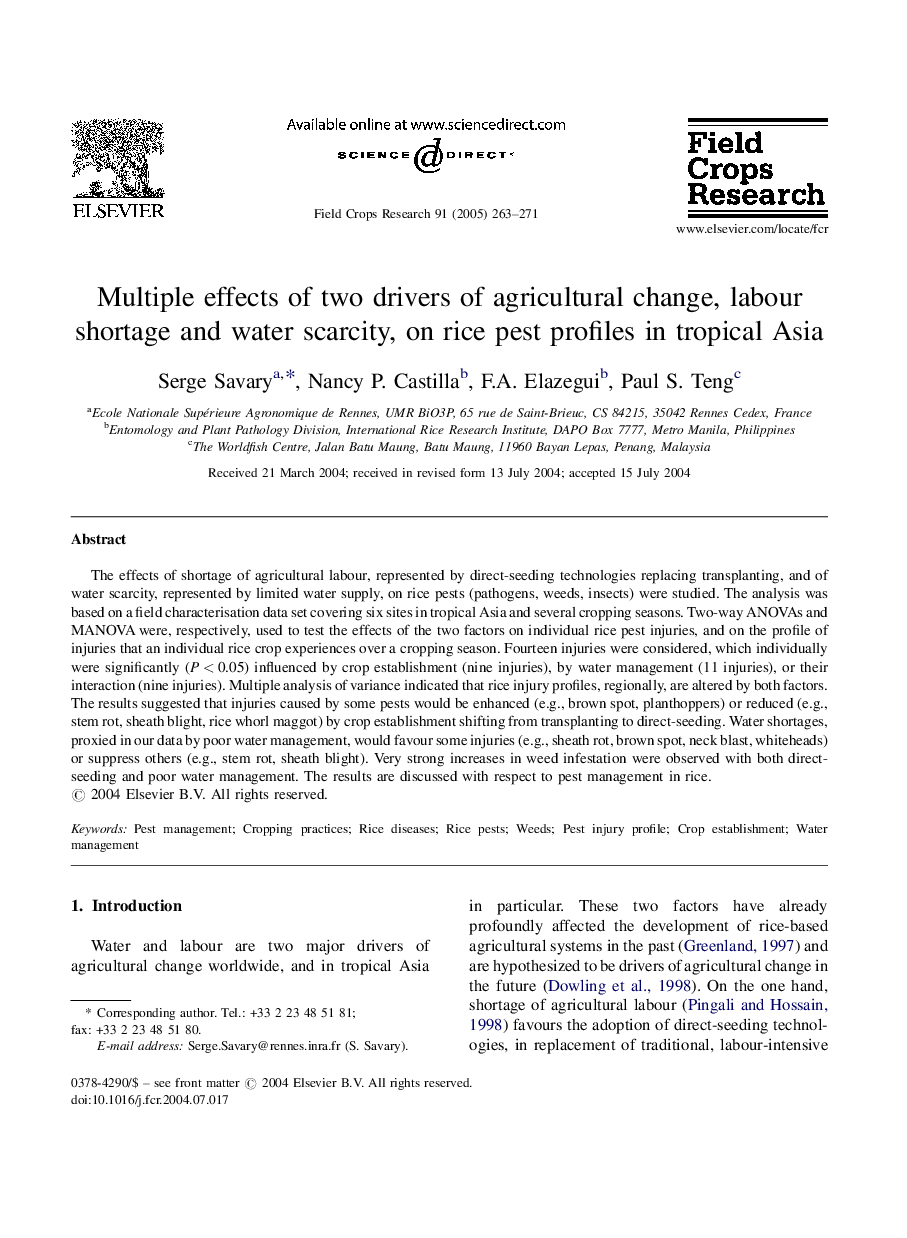| Article ID | Journal | Published Year | Pages | File Type |
|---|---|---|---|---|
| 9473576 | Field Crops Research | 2005 | 9 Pages |
Abstract
The effects of shortage of agricultural labour, represented by direct-seeding technologies replacing transplanting, and of water scarcity, represented by limited water supply, on rice pests (pathogens, weeds, insects) were studied. The analysis was based on a field characterisation data set covering six sites in tropical Asia and several cropping seasons. Two-way ANOVAs and MANOVA were, respectively, used to test the effects of the two factors on individual rice pest injuries, and on the profile of injuries that an individual rice crop experiences over a cropping season. Fourteen injuries were considered, which individually were significantly (PÂ <Â 0.05) influenced by crop establishment (nine injuries), by water management (11 injuries), or their interaction (nine injuries). Multiple analysis of variance indicated that rice injury profiles, regionally, are altered by both factors. The results suggested that injuries caused by some pests would be enhanced (e.g., brown spot, planthoppers) or reduced (e.g., stem rot, sheath blight, rice whorl maggot) by crop establishment shifting from transplanting to direct-seeding. Water shortages, proxied in our data by poor water management, would favour some injuries (e.g., sheath rot, brown spot, neck blast, whiteheads) or suppress others (e.g., stem rot, sheath blight). Very strong increases in weed infestation were observed with both direct-seeding and poor water management. The results are discussed with respect to pest management in rice.
Related Topics
Life Sciences
Agricultural and Biological Sciences
Agronomy and Crop Science
Authors
Serge Savary, Nancy P. Castilla, F.A. Elazegui, Paul S. Teng,
